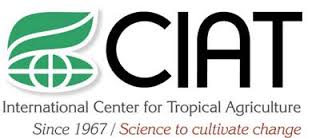Mission
To reduce hunger and poverty, and improve human nutrition in the tropics through research aimed at increasing the eco-efficiency of agriculture.
People
CIAT’s staff includes about 200 scientists. Supported by a wide array of donors, the Center collaborates with hundreds of partners to conduct high-quality research and translate the results into development impact. A Board of Trustees provides oversight of CIAT’s research and financial management.
Values
- Shared organizational ethic
- We respect each other, our partners, and the people who benefit from our work. We act with honesty, integrity, transparency, and environmental responsibility in all of our joint endeavors.
- Learning through partnerships
- We work efficiently and pragmatically together and with partners. Considering our diversity to be a key asset, we adapt readily to change and strive to improve our performance through continuous learning.
- Innovation for impact
- We develop innovative solutions to important challenges in tropical agriculture, resulting in major benefits for the people who support, participate in, and profit from our work.
Members:
Resources
Displaying 76 - 80 of 958Strategies and policies to reach a land-degradation neutral world
Towards developing a “landscape planning and management tool”
Smallholder Farmers’ Perceptions on Climate Change and the Use of Sustainable Agricultural Practices in the Chinyanja Triangle, Southern Africa
In developing regions with high levels of poverty and a dependence on climate sensitive agriculture, studies focusing on climate change adaptation, planning, and policy processes, have gained relative importance over the years. This study assesses the impact of farmer perceptions regarding climate change on the use of sustainable agricultural practices as an adaptation strategy in the Chinyanja Triangle, Southern Africa.






